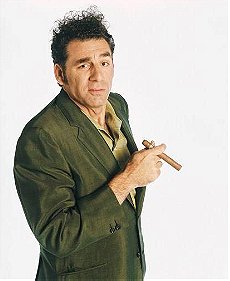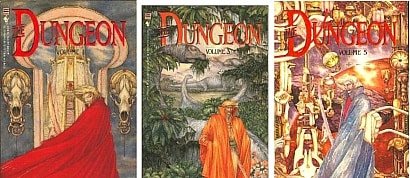Fictional Characters with ADHD
Attention deficit hyperactivity disorder (ADHD) is a frequently diagnosed disorder in child- and adulthood with a high impact affecting multiple facets of social life.
Attention deficit hyperactivity disorder (ADHD) is a mental disorder of the neurodevelopmental type. It is characterized by problems paying attention, excessive activity, or difficulty controlling behavior which is not appropriate for a person's age.These symptoms begin by age six to twelve, are present for more than six months, and cause problems in at least two settings (such as school, home, or recreational activities).In children, problems paying attention may result in poor school performance. Although it causes impairment, particularly in modern society, many children with ADHD have a good attention span for tasks they find interesting.
Despite being the most commonly studied and diagnosed mental disorder in children and adolescents, the exact cause is unknown in the majority of cases.It affects about 5–7% of children when diagnosed via the DSM-IV criteria[9][4] and 1–2% when diagnosed via the ICD-10 criteria. The World Health Organization (WHO) estimated that it affected about 39 million people as of 2013. Rates are similar between countries and depend mostly on how it is diagnosed. About 30–50% of people diagnosed in childhood continue to have symptoms into adulthood and between 2–5% of adults have the condition. The condition can be difficult to tell apart from other disorders, as well as to distinguish from high levels of activity that are still within the normal-range.
The medical literature has described symptoms similar to ADHD since the 19th century. ADHD, its diagnosis, and its treatment have been considered controversial since the 1970s. The controversies have involved clinicians, teachers, policymakers, parents, and the media. Topics include ADHD's causes and the use of stimulant medications in its treatment. Most healthcare providers accept ADHD as a genuine disorder in children and adults, and the debate in the scientific community mainly centers on how it is diagnosed and treated. The condition was officially known as attention deficit disorder (ADD) from 1980 to 1987 while before this it was known as hyperkinetic reaction of childhood.
You might not notice it until a child goes to school. In adults, it may be easier to notice at work or in social situations.
The person might procrastinate, not complete tasks like homework or chores, or frequently move from one uncompleted activity to another.
They might also:
Be disorganized
Lack focus
Have a hard time paying attention to details and a tendency to make careless mistakes. Their work might be messy and seem careless.
Have trouble staying on topic while talking, not listening to others, and not following social rules
Be forgetful about daily activities (for example, missing appointments, forgetting to bring lunch)
Be easily distracted by things like trivial noises or events that are usually ignored by others.
Fidget and squirm when seated.
Get up frequently to walk or run around.
Run or climb a lot when it's not appropriate. (In teens this may seem like restlessness.)
Have trouble playing quietly or doing quiet hobbies
Always be "on the go"
Talk excessively
Toddlers and preschoolers with ADHD tend to be constantly in motion, jumping on furniture and having trouble participating in group activities that call for them to sit still. For instance, they may have a hard time listening to a story.
Having a hard time waiting to talk or react
Have a hard time waiting for their turn.
Blurt out answers before someone finishes asking them a question.
Frequently interrupt or intrude on others. This often happens so much that it causes problems in social or work settings.
Start conversations at inappropriate times.
Impulsivity can lead to accidents, like knocking over objects or banging into people. Children with ADHD may also do risky things without stopping to think about the consequences. For instance, they may climb and put themselves in danger.
Attention deficit hyperactivity disorder (ADHD) is a mental disorder of the neurodevelopmental type. It is characterized by problems paying attention, excessive activity, or difficulty controlling behavior which is not appropriate for a person's age.These symptoms begin by age six to twelve, are present for more than six months, and cause problems in at least two settings (such as school, home, or recreational activities).In children, problems paying attention may result in poor school performance. Although it causes impairment, particularly in modern society, many children with ADHD have a good attention span for tasks they find interesting.
Despite being the most commonly studied and diagnosed mental disorder in children and adolescents, the exact cause is unknown in the majority of cases.It affects about 5–7% of children when diagnosed via the DSM-IV criteria[9][4] and 1–2% when diagnosed via the ICD-10 criteria. The World Health Organization (WHO) estimated that it affected about 39 million people as of 2013. Rates are similar between countries and depend mostly on how it is diagnosed. About 30–50% of people diagnosed in childhood continue to have symptoms into adulthood and between 2–5% of adults have the condition. The condition can be difficult to tell apart from other disorders, as well as to distinguish from high levels of activity that are still within the normal-range.
The medical literature has described symptoms similar to ADHD since the 19th century. ADHD, its diagnosis, and its treatment have been considered controversial since the 1970s. The controversies have involved clinicians, teachers, policymakers, parents, and the media. Topics include ADHD's causes and the use of stimulant medications in its treatment. Most healthcare providers accept ADHD as a genuine disorder in children and adults, and the debate in the scientific community mainly centers on how it is diagnosed and treated. The condition was officially known as attention deficit disorder (ADD) from 1980 to 1987 while before this it was known as hyperkinetic reaction of childhood.
You might not notice it until a child goes to school. In adults, it may be easier to notice at work or in social situations.
The person might procrastinate, not complete tasks like homework or chores, or frequently move from one uncompleted activity to another.
They might also:
Be disorganized
Lack focus
Have a hard time paying attention to details and a tendency to make careless mistakes. Their work might be messy and seem careless.
Have trouble staying on topic while talking, not listening to others, and not following social rules
Be forgetful about daily activities (for example, missing appointments, forgetting to bring lunch)
Be easily distracted by things like trivial noises or events that are usually ignored by others.
Fidget and squirm when seated.
Get up frequently to walk or run around.
Run or climb a lot when it's not appropriate. (In teens this may seem like restlessness.)
Have trouble playing quietly or doing quiet hobbies
Always be "on the go"
Talk excessively
Toddlers and preschoolers with ADHD tend to be constantly in motion, jumping on furniture and having trouble participating in group activities that call for them to sit still. For instance, they may have a hard time listening to a story.
Having a hard time waiting to talk or react
Have a hard time waiting for their turn.
Blurt out answers before someone finishes asking them a question.
Frequently interrupt or intrude on others. This often happens so much that it causes problems in social or work settings.
Start conversations at inappropriate times.
Impulsivity can lead to accidents, like knocking over objects or banging into people. Children with ADHD may also do risky things without stopping to think about the consequences. For instance, they may climb and put themselves in danger.
Sort by:
Showing 10 items
Rating:
List Type:
Added to
Related lists
Martin Sweeney Dallas' Best Fictional Characters
13 item list by martinsweeney dallas
2 votes 1 comment
1 comment
13 item list by martinsweeney dallas
2 votes
 1 comment
1 comment
View more top voted lists
Voters of this characters list - View all
People who voted for this also voted for
Film Diary of 2023
My Library-F
the most beautiful places in Tunisia
Director Debuts- Best to Worst
Vintage Classics 3D Book Covers
Stop-Motion Animations
books read in 2012
Favorite Movies of 2010
The Studios: Warner Bros.
Cute British Actors
monkey with mobil
Best Movies
National Flags with Pictures
Good Cartoon Movies
Favorite Movies of 2004
More lists from Nusch
Indicaçoes César
My Favorite Epidemic Movies
Essential Brazilian Music: Classical / Modinha
My Favorite Chick Flick
Tim Burton: Self-citations
Essential Brazilian Music: Moda de Viola / Caipira
Scary shorts
 Login
Login









































